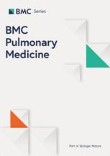Abstract
Background
Although blood eosinophil count is recognized as a useful biomarker for the management of chronic obstructive pulmonary disease (COPD), the impact of eosinophils in COPD has not been fully elucidated. Here we aimed to investigate the relationships between the blood eosinophil count and various clinical parameters including lung structural changes.
Methods
Ninety-three COPD patients without concomitant asthma were prospectively enrolled in this study. Blood eosinophil count, serum IgE level, serum periostin level, and chest computed tomography (CT) scans were evaluated. Eosinophilic COPD was defined as COPD with a blood eosinophil count ≧ 300/µL. We examined the correlation between the blood eosinophil count and structural changes graded by chest CT, focusing specifically on thin airway wall (WT thin) and thick airway wall (WT thick) groups. In a separate cohort, the number of eosinophils in the peripheral lungs of COPD patients with low attenuation area (LAA) on chest CT was assessed using lung resection specimens.
Results
 |
| Eosinophils were increased in peripheral lungs of COPD with low attenuation areas on chest CT |
Conclusions
Some COPD patients without concomitant asthma showed a phenotype of high blood eosinophils. Alveolar damage may be related to eosinophilic inflammation in patients with COPD without asthma and thickening of the central airway wall.

No comments:
Post a Comment